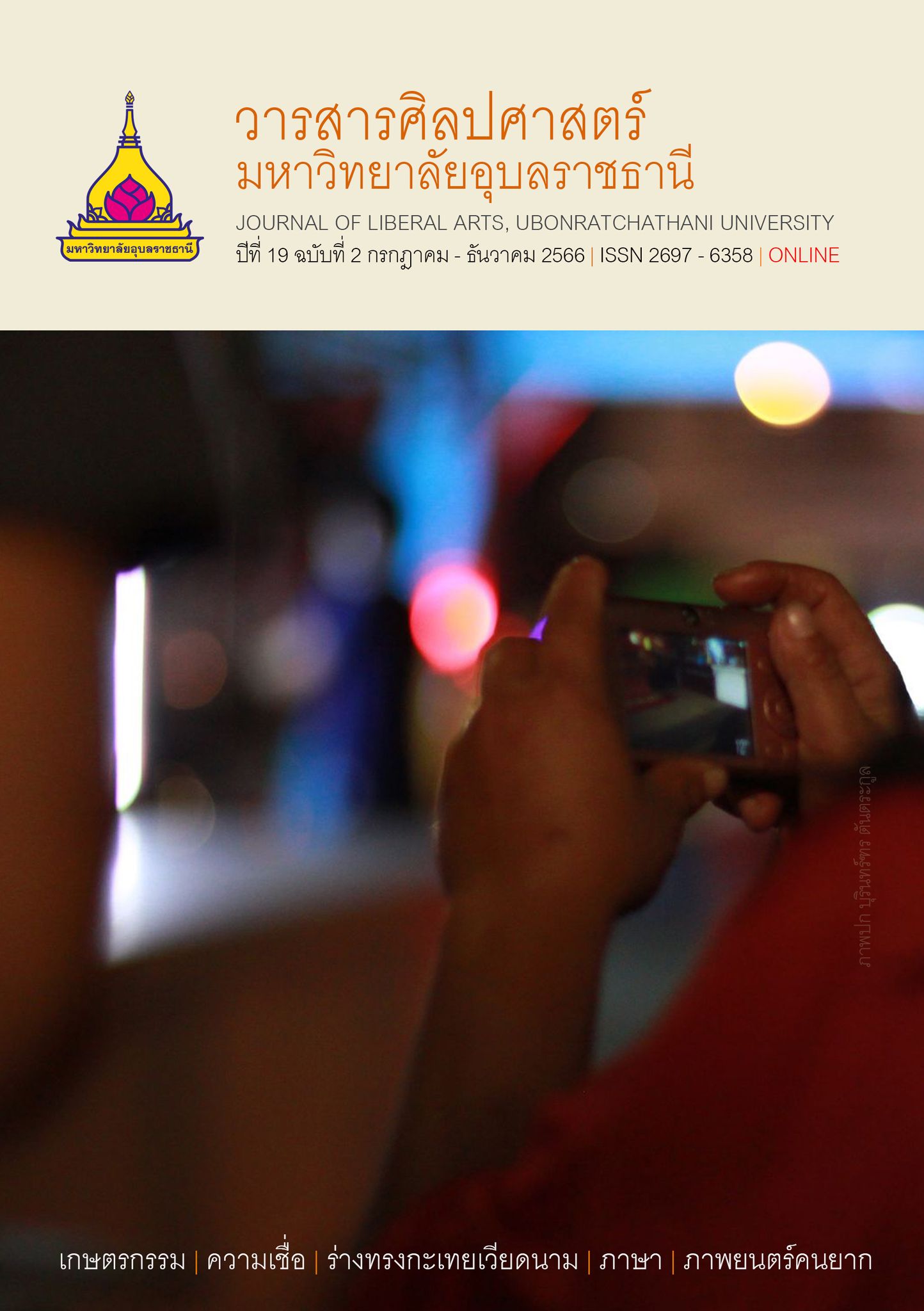Identities and Tourism Marketing between Thailand-Laos as a Single Destination: A Case Study of Mukdahan – Savan - Seno and Nakhon Phanom -Thakhek Special Economic Zones
Main Article Content
Abstract
The main objectives of this research are to (1) explore tourism potential and its related identities in Mukdahan – Savan - Seno and Nakhon Phanom - Thakhek SEZs (2) identify tourists’ demands and tourism market positioning and (3) set up tourism marketing strategies based on the identities of tourist attraction in the areas. This research was carried out with mixed methods approach. For quantitative survey, an evaluation form about tourism potential was used to get information from stakeholders (i.e., government, private sector, and local community) while a survey questionnaire about tourists’ demand was used to collect data from a sample of 300 tourists. Besides, a focus group discussion about local identity, market positioning, and marketing strategy development was conducted with a group of the stakeholders from 2 provinces of Thailand and 2 provinces of Laos.
According to the analysis of overall tourism potential of the areas, it was found that Nakhon Phanom is considered as a high potential area while Mukdahan, Kaysone Phomvihane (Savannakhet), and Thakhek are in moderate level. Tourism identity of the areas can be categorized into 4 characteristics: geological tourism, religious tourism, architectural tourism, and river-based tourism. The survey about tourist’s demands revealed 7 factors to support their travel: (1) interpretation about tourist sites, (2) standard price, (3) channel of distribution, (4) sale promotion, (5) communication skills in a foreign language, (6) tourism management, and (7) a sense of collective identity. Regarding tourism market positioning, there are 3 stages: (1) position of tourism corridor, (2) position of secondary city route, and (3) position of tourist destination. The result of tourism marketing analysis led to the proposition of 3 marketing strategies: (1) development of a tourism master plan for integrated tourism, (2) strengthening human resource and a systematic mechanism for distribution of tourism's benefits, and (3) development of tourism policy and legislation for this particular area, by county-to-country.
Downloads
Article Details

This work is licensed under a Creative Commons Attribution-NonCommercial-NoDerivatives 4.0 International License.
References
References
Agakowa, E. (2008). Special Economic Zones and the Future of Tourism on Bikal. Washington, D.C.: Institute of World Affairs.
ASEAN. (2016). ASEAN Tourism Strategic Plan 2016-2025. Jakarta: ASEAN.
Asian Development Bank. (2016). The Role of Special Economic Zones in Improving Effectiveness of GMS Economic Corridors. Manila: ADB.
Chumpradit, K. (2017). Identities Analysis for the Value Added of Cultural Tourism Destinations in Chiang Rai Special Economic Zone. [in Thai]. Chiang Rai: Chiang Rai Rajabhat University.
Cohen, E. (1988). Authenticity and Commoditization in Tourism. Annals of Tourism Research, 15 (3), 371 - 386.
Craib, I. (1998). Experiencing Identity. London: SAGE. Department of Tourism. (2016). ASEAN Tourism Strategic Plan: ATSP
- 2025. [in Thai]. Bangkok: Ministry of Tourism and Sports.
Du Gay, P. (1997). Production of Culture and Cultures of Production. London: SAGE.
Glaser, B. (1999). Discovery of Grounded Theory Strategies for Qualitative Research. New York: Routledge.
Immigration Bureau. (2017). Thailand and Lao PDR Immigration Statistics. [in Thai]. Bangkok: Immigration Bureau.
Indonesia Tourism Investment. (2018). An Invitation to Invest in Tourism Development in Tanjung Kelayang Special Economic Zone,
Bangka Belitung Province, Republic of Indonesia. Jakarta: Indonesia Tourism Investment.
Jittangwatthana, B. (2012). Marketing Management for Tourism Industry. [in Thai]. Bangkok: Press and Design.
Pongnak, I. (2014). Identity of U Thong Ancient City and Cultural Tourism Development in Suphanburi Province. [in Thai]. Bangkok:
Chulalongkorn University.
Korea Tourism Organization. (2017). Special Economic Zone for Specialized Regional Development. Seoul: Korea Tourism Org.
Lynch, K. (1960). The Image of City. Massachusetts: The M.I.T. Press. Mekong Tourism Coordinating Office. (2017). Greater Mekong Subregion
Tourism Sector Strategy 2016–2025. Bangkok: Mekong Tourism Coordinating Office.
Ministry of Tourism and Sports. (2006). Criteria and Assessment of Tourism Potential. [in Thai]. Bangkok: Ministry of Tourism and Sports.
Ministry of Tourism, Government of India. (2016). Enclavisation of Tourism: Special Tourism Zones in India. New Delhi: Ministry of Tourism,
Government of India.
Office of the National Economic and Social Development Council. (2018). Special Economic Zones. [in Thai]. Bangkok: Office of the National Economic and Social Development Council.
Sindecharuk, T. (2018). Sustainable Tourism Coordination between International Sister Cities. [in Thai]. Bangkok: Designated Areas for
Sustainable Tourism Administration (Public Organization).
Sobirov, B. (2017). The Concept of the Tourist Economic Zone: Case of Uzbekistan. Samarkand: Samarkand Institute of Economics and Service.
The Board of Investment of Thailand. (2016). Investment of Special Economic Zones Handbook. [in Thai]. Bangkok: The Board of
Investment of Thailand.
The Office of Strategy Management. (2017). Tourism Promotion of Sanuk Province. [in Thai]. Sakon Nakhon: OSM.
Tourism Authority of Thailand. (2017). Tourism Marketing. [in Thai]. Bangkok: Tourism Authority of Thailand.

